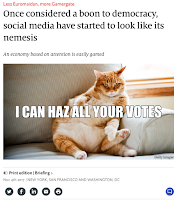I was attracted to a full-page ad in the NY Times, of
November 26, 2017 placed by the IMCTC, an organization that I hadn’t heard of
until I read the ad. As it turns out Riyadh, the capital of Saudi Arabia was
hosting the first IMCTC Conference today (See: https://www.geo.tv/latest/169540-pm-abbasi-coas-reaches-saudia-arabia-to-attend-imctc-conference)
The array of members is pretty impressive as you can see
with the Flag display above and the member listing below. These 41 countries
are looking to the IMCTC as a coordinating force as “"pan-Islamic unified front" against violent extremism.”
(see:
https://imctc.org/English which is also
a photo source)
“The
alliance was announced in 2015 under the auspices of Prince Mohammed, whose
rapid ascent since his appointment as heir to the throne in June has shaken the
political scene across the region.” However, this is their first meeting. This
alone tells me something.
 The
alliance is focusing on four domains: Ideology, Communications, Counter
Terrorist Financing and Military. The Communications objectives could well be
the foundation of Allied PSYOP Efforts pinned on three principles:
The
alliance is focusing on four domains: Ideology, Communications, Counter
Terrorist Financing and Military. The Communications objectives could well be
the foundation of Allied PSYOP Efforts pinned on three principles:
1.
Counter
enemy influence efforts.
2.
Promote
positive values.
3.
Communicate
through credible influencers.
In
reviewing their military objectives, it would seem that the Coalition’s goals
are similar to allied efforts. The member nations are generally Sunni-majority
or Sunni-ruled countries. General (R) Raheel Shareer formerly Pakistan’s Army
Chief) indicated that support would be primarily intelligence sharing and
capacity building.
The
Coalition was conceived and started by Saudi Arabia. Can it emerge as an “Islamic
NATO”? See: http://theduran.com/can-imctc-become-islamic-nato/
Anyone
who has ever served in a NATO billet knows the organization is its own beast.
While some nations appear to be better represented than others, NATO forces are
truly multi-national military forces when they deploy. There are always
conflicts among national interests, and NATO appears to have been able to
absorb them.
Once
can’t help wondering if the same sort of unity would be possible in the IMCTC.
Reader
comments are invited!







